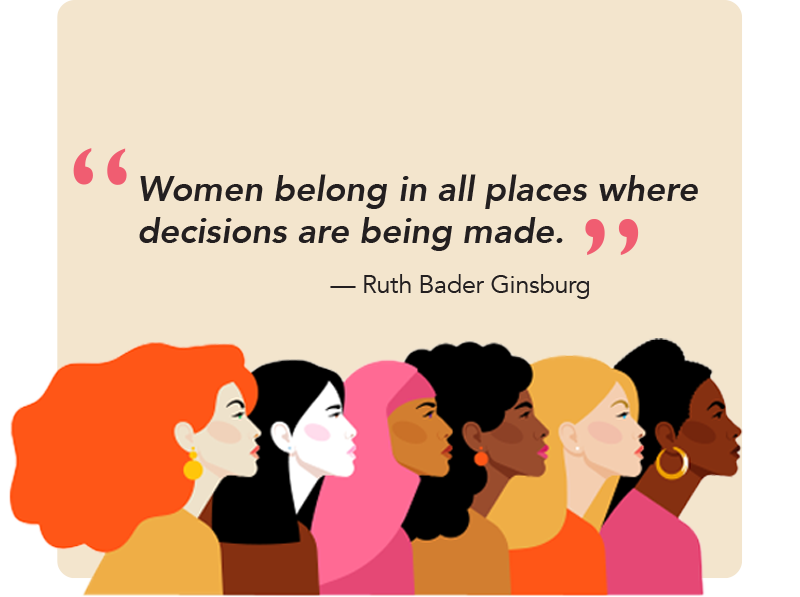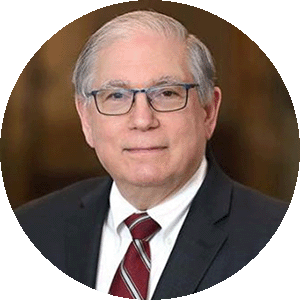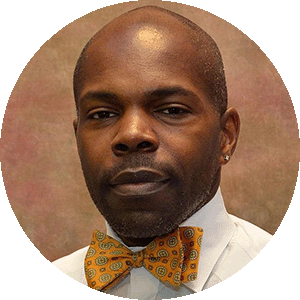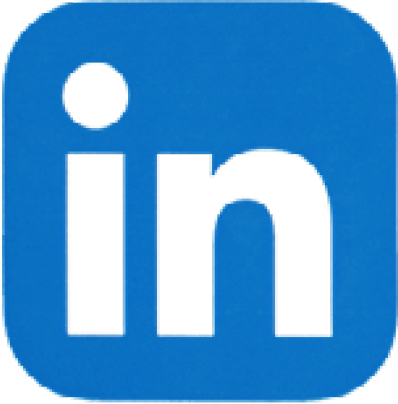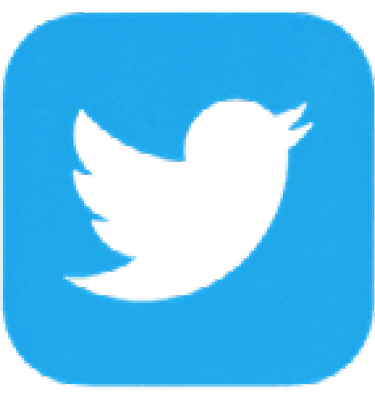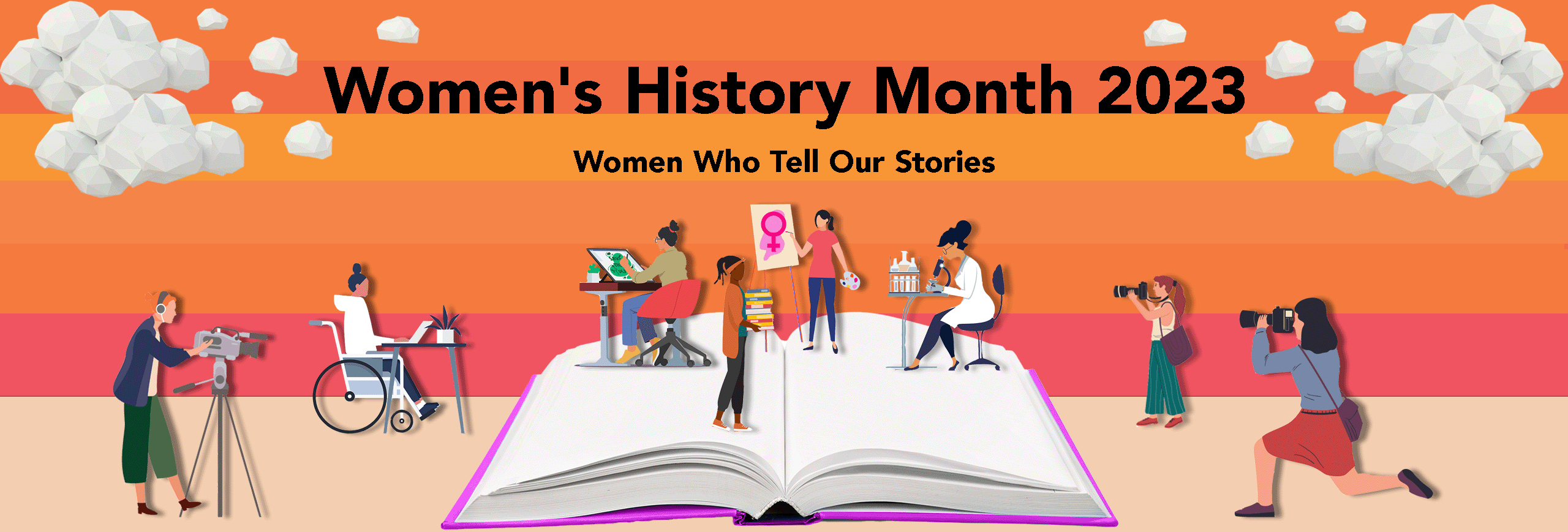
A Message from the Strategist
“What I know for sure is that speaking your truth is the most powerful tool we all have.” -Oprah Winfrey
It is with great honor that I present the Office of Equity, Diversity, and Inclusion’s 2023 Women’s History Month Campaign – “Women Who Tell Our Stories.” Stories are powerful because they have allowed generations of women to share their truth, step into their power, and inspire others to do the same. So often, women are the keepers of wisdom, memory, and knowledge. The narratives of women bind these elements together, allowing us to impart essential truths to each other, and to future generations.
Women throughout the NIH, just like women throughout the world, triumph over adversity to share their personal stories. We are vital to every facet of the NIH – from the lab, the office, to the front line. Our presence and contribution each day at NIH adds to our story. Every project, every initiative, and every effort are a new opportunity to grow our legacy. Today, we have more power to shape our stories and tell them to the world than ever before.
This month, as we embrace the rich diversity embodied by the women of NIH, we will ask them: How did your story lead you here? What mountains did you climb? What advice do you have for those on their respective journeys?
There is so much to celebrate and yet, so much still to learn. Join me for this Women’s History Month as we learn from each other, together.
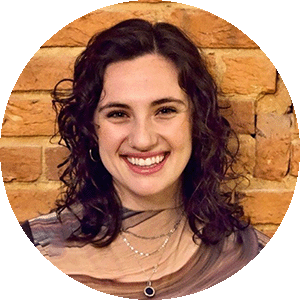
Emma Kaufman
Acting Principal Strategist
Portfolio for Women
Interview Spotlights
In this series of interview spotlights, we have the privilege of learning from the experiences and insights of women working at NIH. Read about the exciting contributions of NIH women as told through their own stories. Each interview highlights the diversity of roles and perspectives represented by women within our community.
Bonnie Hamalainen, Art Director
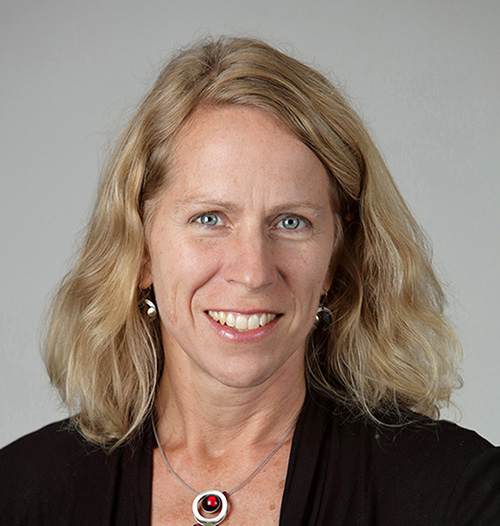
I leaned hard into my mother’s mantra, “patience is a virtue”...
Tell us about your most challenging assignment. What was the outcome?
A recent challenge was designing a site-specific mural system for the National Heart, Lung, and Blood Institute (NHLBI). NHLBI occupies five floors of an off campus leased facility totaling over 100,000 square feet. The building interior was architecturally challenging and a bit of a maze, so the murals served a dual purpose; to visually inspire and assist staff with wayfinding in the building. NHLBI was engaged and supportive throughout the process. The result is a space that is vibrant, visually engaging, on-brand, and staff and visitor friendly.
Is there a funny story about an event or assignment you covered?
I once was asked to design “non-depressing” covers for a health education booklet on depression.
What is your dream assignment (inside or outside of NIH)?
Designing environmental graphics for a Winter Olympics.
What is it that you wished you knew at the start of your career that you know now?
Graphic design work is sedentary and hard on the eyes.
What is the most memorable assignment you covered?
One publication design assignment I did years ago was particularly memorable due to the client. The client was incredibly accomplished and opinionated, making for a challenging design process. I was questioned and tested every step of the way. I leaned hard into my mother’s mantra, “patience is a virtue,” and I ultimately delivered a successful design piece.
What attributes do you have that make you successful in your job?
I am successful because of my knowledge and experience in my craft; organizational and interpersonal skills; and my ability to run middle and long-distance project races (not just the 100-yard dash).
Please provide your name, job title, and the length of time you have worked for the NIH:
Bonnie Hamalainen, Art Director, NIH Medical Arts Branch, Office of Research Services, 18 years.
Who or what influenced you to do the work that you do?
From a young age, I was interested in architecture, design, art, writing, and life sciences. I used to participate in science fairs, and I won prizes for the visual communication and display of my research (but not the research itself, ha!).
Why do you think the work you do is important to NIH?
The work I do, particularly site-specific artwork and environmental graphic design, sets a professional tone and hopefully inspires staff who conduct the research and operations of NIH. My design work visually communicates the research and mission of NIH ICOs.
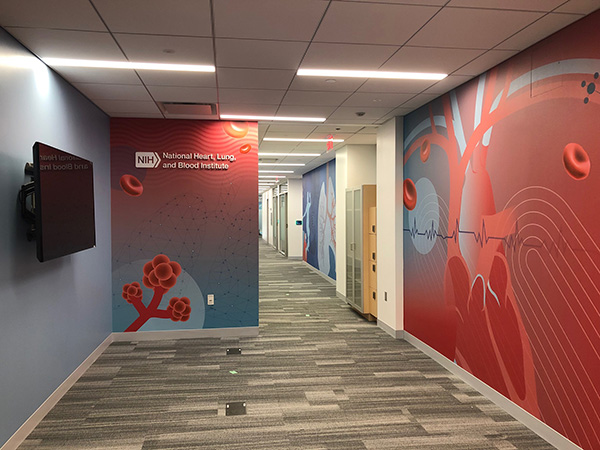
Med Arts NHLBI mural
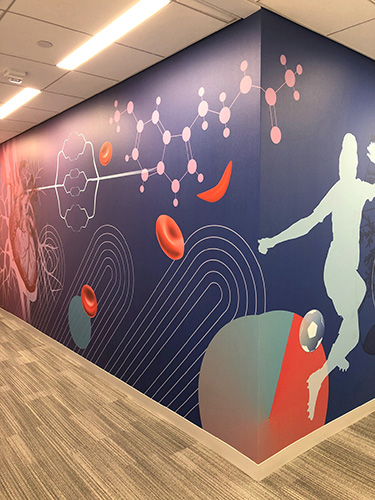
Med Arts NHLBI mural
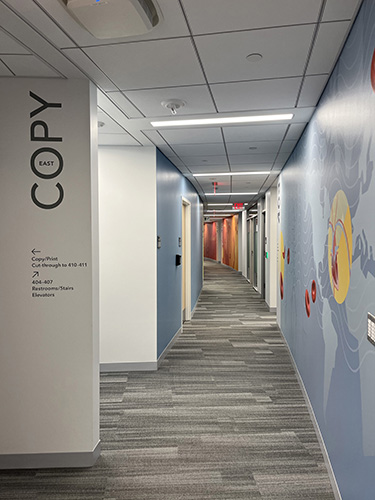
Med Arts NHLBI mural
Joy Jackson Farrar, Video Producer
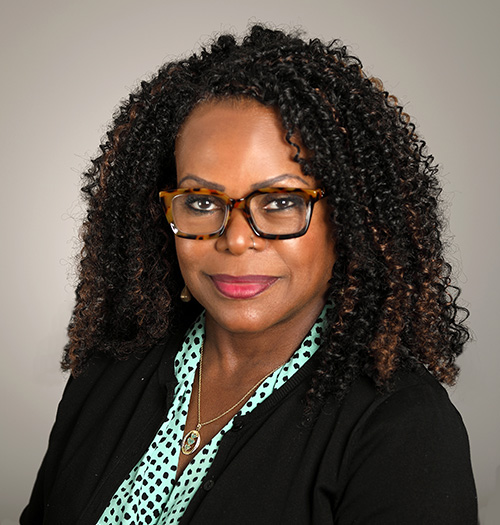
The feeling of being part of something bigger than yourself makes me most proud...”
Is there a funny story about an event or assignment you covered?
One of my assignments was covering a Presidential visit. There was TV coverage from every major network present. My job was to start and monitor the video deck.
When the announcer said, “Ladies and gentlemen, please stand for the President of the United States,” I stood up too. I was so amazed to see the actual President in person. He looked much more handsome than he did on TV. He warmed the crowd by telling a joke, then everyone laughed and sat down. I sat down too and was feeling so excited about seeing him. When I finally came to my senses, I realized I had not started the video recording. My stomach immediately developed knots. I knew the outcome would not be good. I had missed the first two minutes of the President. When my supervisor discovered what happened, it was not good. However, my camera person knew someone from C-Span who was able to provide the entire recording with the joke. The lesson I learned is to always do your job first and enjoy the special moments later.
What is your dream assignment (inside or outside of NIH)?
Of course, it would be working for the Oprah Winfrey Network. I admire all the projects Ms. Winfrey produces that highlight the talent and accomplishments of African Americans. Black women need more recognition than they receive, especially in the media. I do believe things are headed in a positive direction, but if I could play any part to further that cause, that would be my dream.
What is it that you wished you knew at the start of your career that you know now?
I wish I had realized the value of mentoring, both in those who mentored me, and others whom I could have helped. “Lifelong learning” is not just a cliché phrase. I had the privilege of learning from others who had a different set of skills than I did. I was open to learning from others by exploring different ways of approaching a project and recognizing the importance of collaboration.
I was working on a project for the Eunice Kennedy Shriver National Institute of Child Health and Human Development (NICHD) about the importance of sudden infant death syndrome (SIDS) prevention. The incidence of SIDS among children of color is exponentially higher than their White counterparts. The scope of the project required us to hire actors to demonstrate the technique of placing babies on their backs to sleep.
My colleague, producing the project, entrusted me with holding auditions for a representative group of actors. We were having difficulty finding any women of color, especially Native Americans, in the Washington D.C. metropolitan area. The producer and NICHD allowed me to fly to several cities in search of that representation. It was a huge success. The final product was not only beautifully produced but had a diverse and relatable cast.
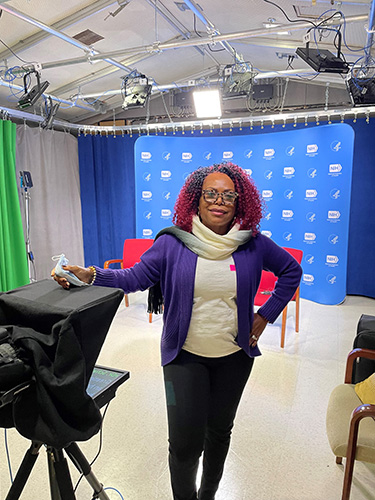
In the studio
Please provide your name, job title, and the length of time you have worked for the NIH:
My name is Joy Farrar and I worked for the NIH for 40 years before retiring in January 2020. Three months later, NIH, my home away from home, called me to ask if I would come back on a part-time basis. I gladly accepted. By October 2021, I was asked if I wanted a full-time position, and I have been working as a contractor ever since.
Who or what influenced you to do the work that you do?
I began my NIH journey while working on my degree at the University of Maryland College Park. I worked in procurement for about three years before I discovered that there was a TV studio at NIH.
After I was hired by the studio on a full-time basis, I began to learn the craft of developing video messages for various NIH ICs. Television was much different in those days and very hands-on. I had to learn all facets of production. I learned how to operate the camera, set up lights and microphones, and edit. Nothing was digital!
Later in my career, I helped the ICs craft and execute messages about health and science. NIH was, and always will be, regarded as an incredibly prestigious and highly valued institution. I loved being a part of that work. It is an honor to produce creative communication tools that help further that mission.
People all over the world come to NIH to learn about new treatments for rare illnesses that may have no cure. I was inspired when I met patients who were the direct benefactors of the extraordinary dedication of NIH research teams.
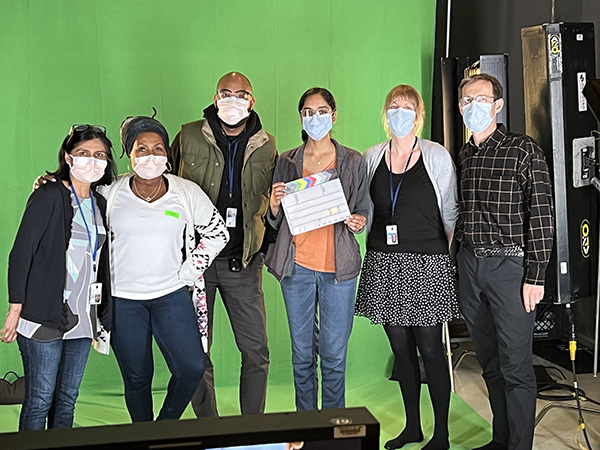
Green shoot in studio for NIMH
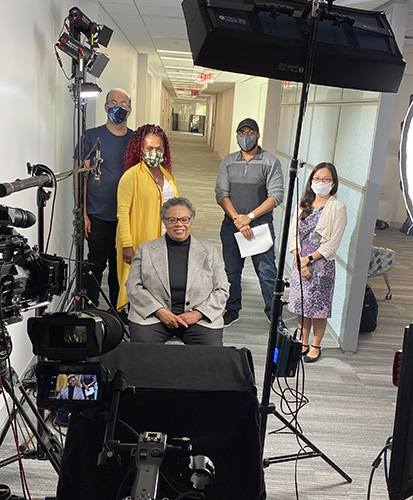
On the video set with NALM Director and crew
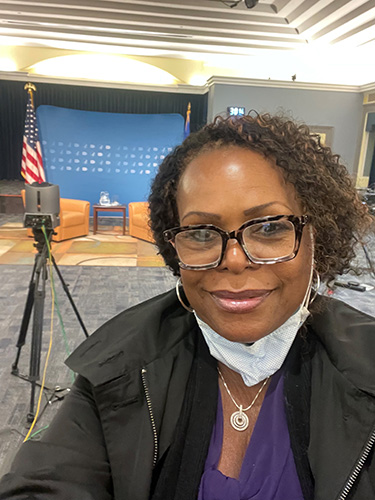
Preparing for Dr. Tabak’s Fireside Chat
What work are you most proud of and why?
I am most proud of the many videos I have produced over the years on subjects involving children, recruitment, new research, and more. I truly enjoy the collaborations with so many people to create pieces that will withstand the test of time. The feeling of being part of something bigger than yourself makes me most proud.
What is the most memorable assignment you covered?
Dr. Anthony Fauci and his well renowned work is most memorable to me. I had the privilege of working on assignments dealing with HIV/AIDS, Ebola, Zika, and the COVID pandemic. That work will be forever embedded in my video team and me.
What attributes do you have that make you successful in your job?
Multitasking is by far the most important attribute you need to do this job. Having a friendly, patient nature is helpful as well. Because I create projects that are unique, I have honed my ability to think outside the box. Rest assured; I have had help along the way. I hope the future involves my helping others in their journey.
India Taylor, Lead Graphic Production Specialist
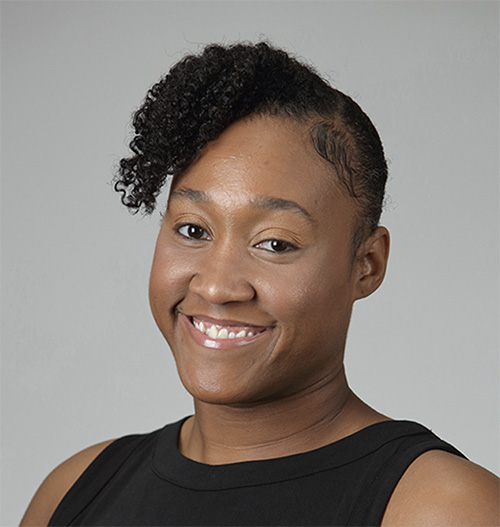
I think we have proven to be essential to NIH daily operations...
Tell us about your most challenging assignment. What was the outcome?
The most challenging assignment would have to be the COVID-related signage MAB produced at the height of the pandemic.
If you can imagine, when everyone else was hunkering down at home with limited contact with others, I was part of a small team onsite within MAB tasked with receiving, designing, and producing COVID signage in a variety of sizes, all within a day’s notice. In a time when there was not a lot of information about COVID and its transmission method (whether it was through direct person to person contact, touching surfaces, or simply passing someone in the hallway), I was still coming to work to provide essential signage for patients, visitors, and employees. Essential signage included campus and building entry, car line testing, social distancing, and general wayfinding. The clients included NIH Office of the Director, Clinical Center, several offices within Office of Research Services, and many more!
Although this was a challenging time, I earned a spot in Dr. Collins’ “Gratitude Tour,” where I got to speak virtually with Dr. Collins about our efforts, accomplishments, and the integral role my colleagues and I played during the toughest part of the pandemic.
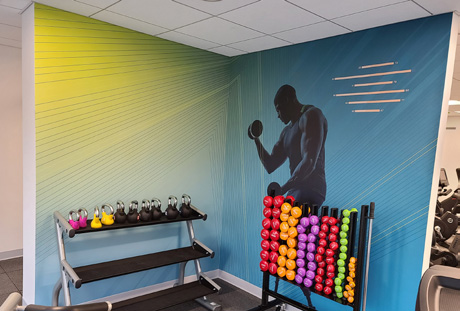
DATS fitness mural
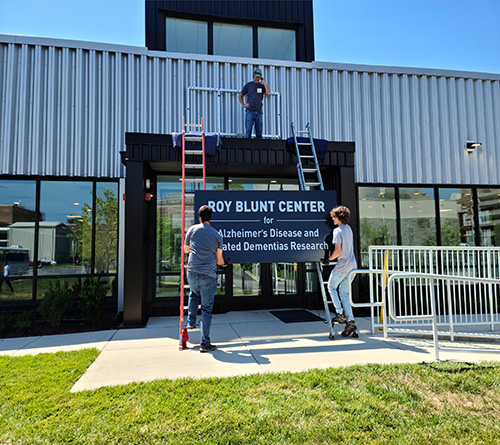
Building T44 sign
Please provide your name, job title, and the length of time you have worked for the NIH:
India Taylor, Lead Graphic Production Specialist, 12 years.
Who or what influenced you to do the work that you do?
I was born an artist. It is only natural that I am in this field.
Why do you think the work you do is important to NIH?
The work my colleagues and I do here at Medical Arts Branch (MAB) is instrumental yet fundamental to helping NIH achieve its mission and everyday functions. Whether it is as small as providing name tents for VIP visitor meetings, event poster designs, or producing over 3,000 COVID-related signage materials, I think we have proven to be essential to NIH daily operations.
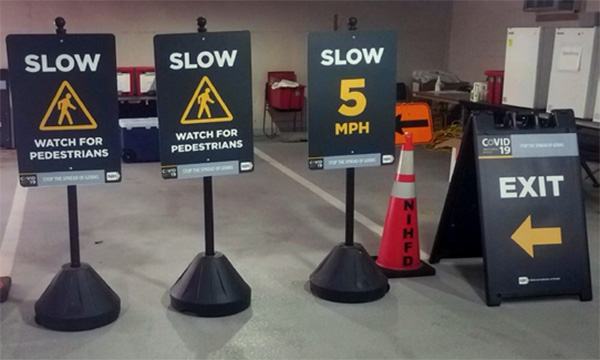
Emergency COVID signage
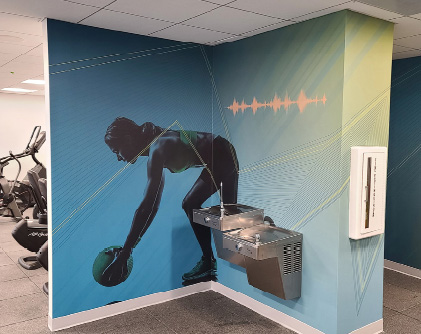
DATS fitness mural
Is there a funny story about an event or assignment you covered?
The funniest story happens daily, in that I must be a bit crazy to be able to keep up with the madness. :)
What is your dream assignment (inside or outside of NIH)?
I originally wanted to get into advertising, so a Super Bowl commercial pitch would be nice.
What is it that you wished you knew at the start of your career that you know now?
Typography, typography, typography. And…the due date of all your jobs...is yesterday.
What work are you most proud of and why?
The T44 Building Exterior Signage Project for the Center for Alzheimer’s Disease and Related Dementia’s was the first of its kind for me and MAB. I was literally the first to do it. Navigating the process and materials was completely new, and with very quick turnarounds, it almost felt impossible at times. I got through it successfully and I now have this wonderful piece to add to my portfolio that features my diverse skills.
What is the most memorable assignment you covered?
The T44 Building Exterior Signage project. It was new territory for me, and I was able to attend the ceremony, which was an honor!
What attributes do you have that make you successful in your job?
I have a relentless work ethic and great desire to meet the client’s needs.
Chia-Chi Chang “Charlie,” Public Affairs Photographer

I was lucky to be able to document many NIH historical events...
Tell us about your most challenging assignment. What was the outcome?
On March 26, 2020, at the beginning of the pandemic, I received an assignment to take photos of NIH’s pandemic response. At that time, we did not have much knowledge about the disease and there was no vaccine. I was very scared. I photographed the COVID testing car line at the Department of Laboratory Medicine, COVID call center, and screening station. I had to overcome my fear by going to the lab where there were test samples. I tried to tell myself that the Department of Laboratory Medicine staff were even closer to the virus than me and that I should not be scared.
Is there a funny story about an event or assignment you covered?
I do not have a funny story to share, but I think my job is a fun job. I have access to many different parts of NIH like various labs and events. I would not have the opportunity to experience these places or events without this job.
What is your dream assignment (inside or outside NIH)?
I love various subjects and types of photography, so I want to continue exploring these things at NIH.
What work are you most proud of and why?
I do not have just one thing that I am the proudest of doing. Everything I do at NIH makes me proud.
What is the most memorable assignment you covered?
I photographed Camp Fantastic in 2017, 2018, and 2019, which is a week-long summer camp for cancer patients treated within the past three years, ages seven to seventeen. Kids come out of this program as good friends with their fellow campers. There is a lot of emotion on the last night of camp. The kids know that they may not see their new friend next summer because that friend could pass away.
What attributes do you have that make you successful in your job?
I am successful because of the love I have for my job. I have passion and persistence for my work.
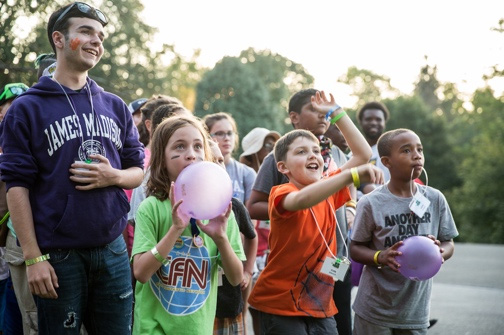
Camp Fantastic
Please provide your name, job title, and the length of time you have worked for the NIH:
Chia-Chi Chang “Charlie” Public Affairs Photographer, Freelance Photographer since November 2016, Staff Photographer since June 2019.
Who or what influenced you to do the work that you do?
I met NIH photographer, Ernie Branson, who retired in 2018. In 2016, I was hired as a second photographer for the swearing in ceremony of National Library of Medicine Director, Patricia Brennan. After that job, Ernie brought me on as a freelance photographer at NIH. I learned a lot of photography skills from him.
Why do you think the work you do is important to NIH?
I think every role at NIH is important. As a photographer, I was lucky to document many historical moments at NIH, such as presidential visits, COVID vaccination events, and more. I also provided profile photos for NIH employees and documented various lectures, symposiums, and events.
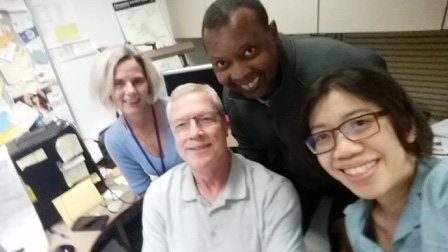
Ernie Branson (the front center with grey polo shirt)
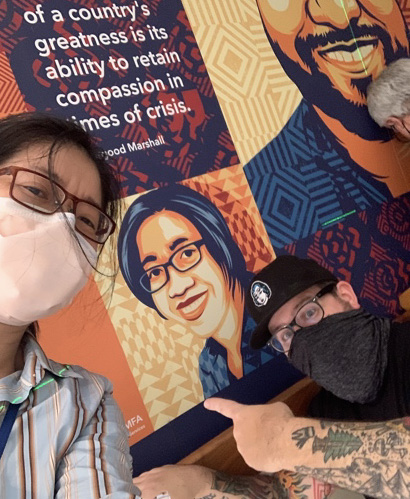
Medical Arts artist Jeffery Everett and Charlie (left) in front of the Unite Initiative project. (Bldg. 31 1st floor). “Establish a Healthy Organizational Culture”
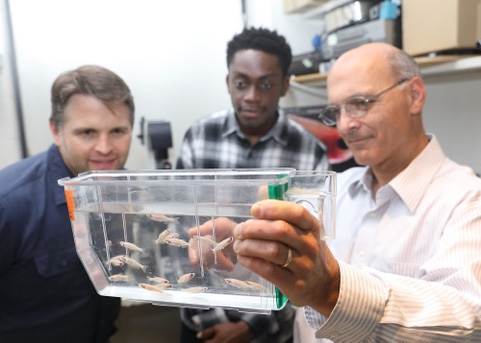
NICHD Dr. Brant Weinstein’s zebrafish lab
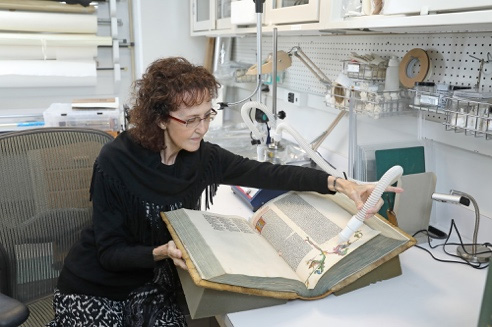
National Library of Medicine
Women Who Made NIH History: A Photographic Exploration
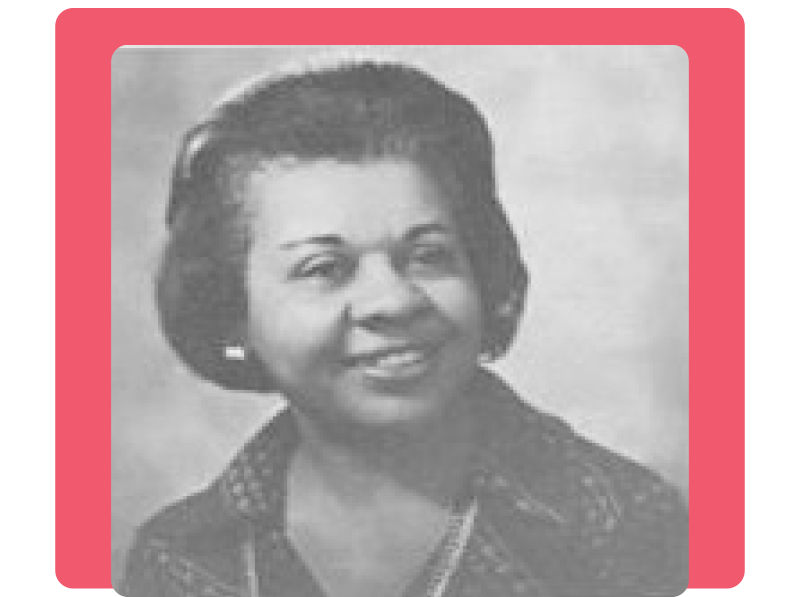
Vernice Ferguson
Vernice Ferguson served as Chief of the Clinical Center Nursing Department from 1975-1981, then went on to have the highest level nursing position in the Department of Veteran’s Affairs Administration.
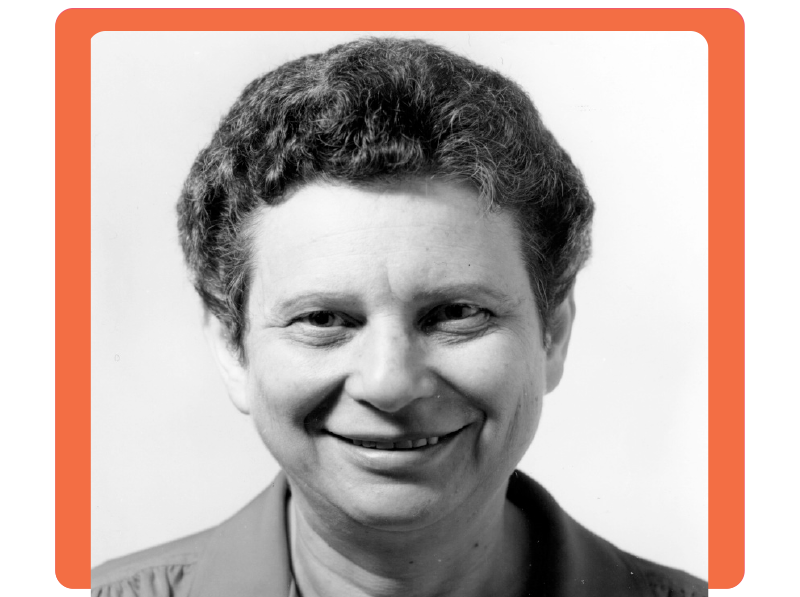
Elizabeth Neufeld
Elizabeth Neufeld is the first woman from NIH to be elected to the National Academy of Sciences.
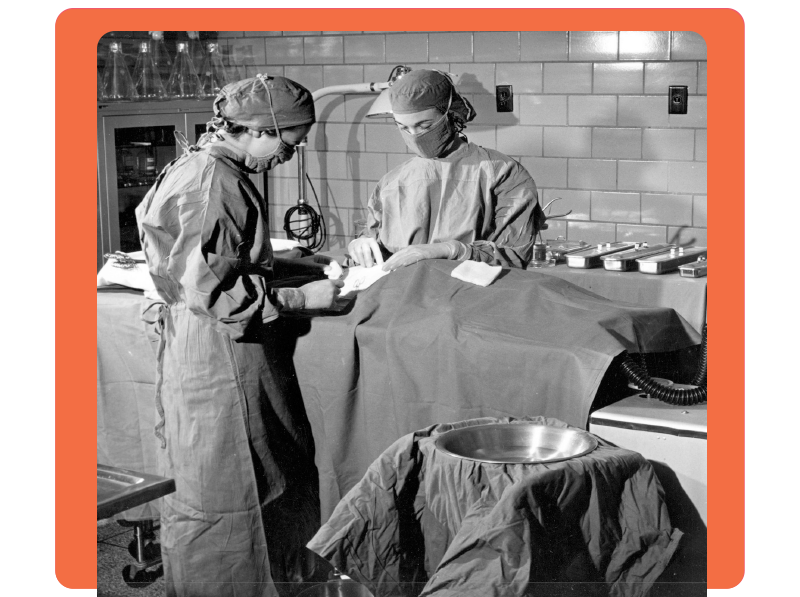
Dr. Sarah Jane Ulrich
Sarah Jane Ulrich is NIH’s first woman veterinarian, beginning her NIH career as a Senior Assistant Vet in the Division of Research Services, Laboratory AIDS Branch.
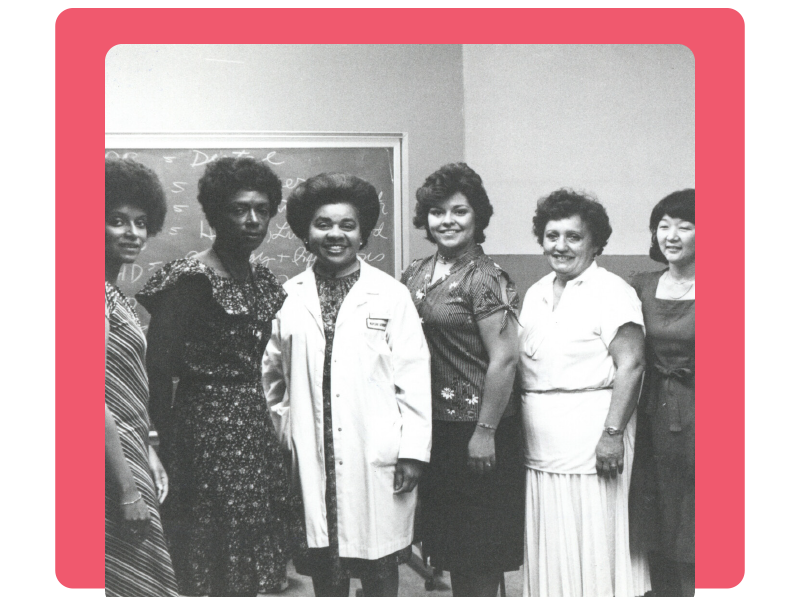
Group of Women
Group photo showing many faces of NIH staff.
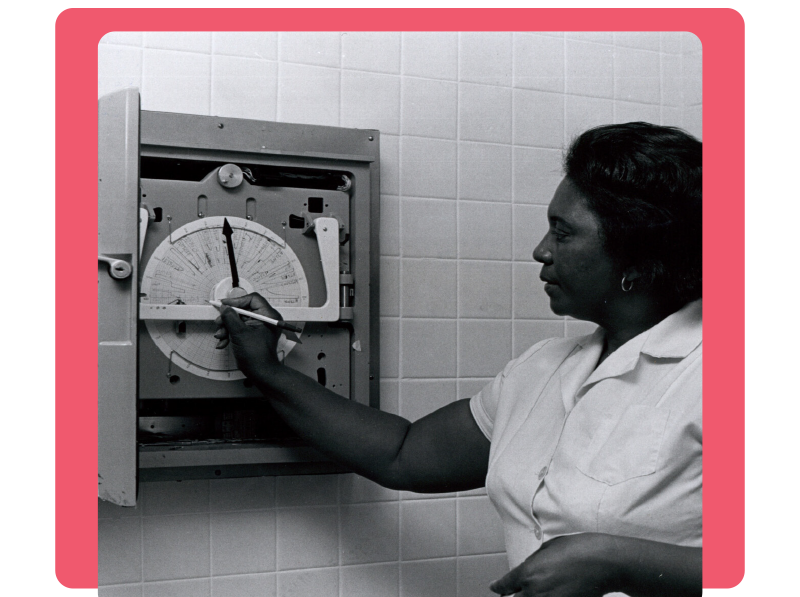
Woman Scientist
Technician taking reading and recording information from medical equipment.
